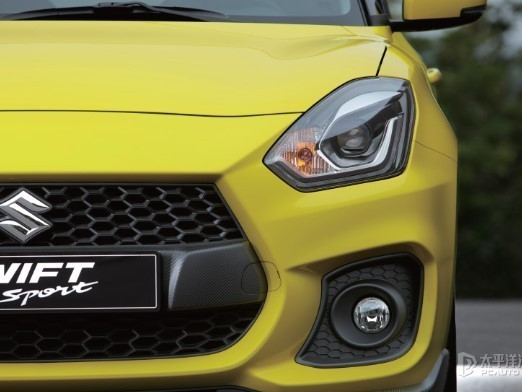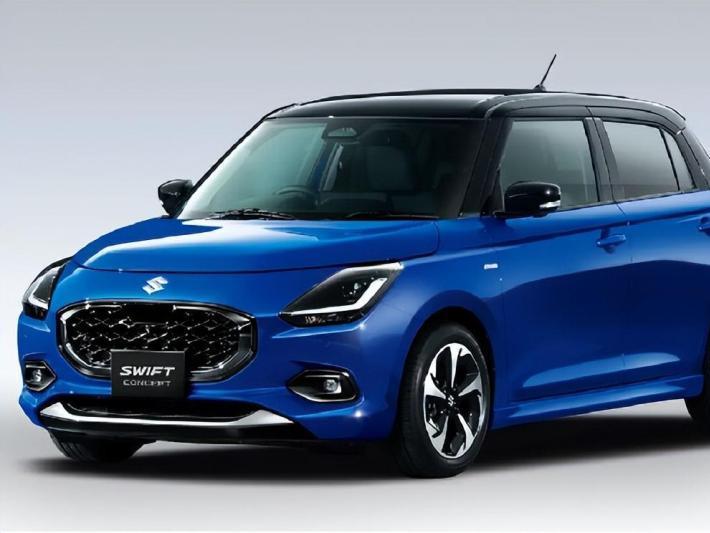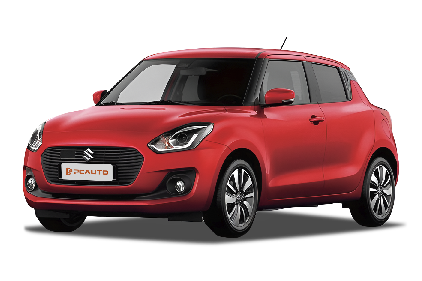Q
How many setas does the Suzuki Swift have?
The Suzuki Swift is a compact hatchback that's long been a favorite among Malaysian drivers. The latest model on sale comes standard with a 5-seat layout – two up front and a three-person bench in the back – making it ideal for small families or daily commutes. It's known for its nimble handling and impressive fuel efficiency. Even though it's a small car, smart space planning ensures decent legroom for rear passengers, though the middle seat can feel a bit tight on longer journeys.
It’s worth noting that seat designs have varied slightly across Swift model years. For instance, some older versions offered 60:40 split-folding rear seats to expand cargo space, while sportier trims might feature more supportive, contoured seats to up the driving excitement. In Malaysia, the Swift also gives you engine options: a 1.4L naturally aspirated or a 1.0L turbocharged unit, both paired with a lightweight body – a combo that really shines in city driving.
If you’re eyeing a used Swift, I’d recommend checking the seats for wear in person. These cars are often used as ride-shares or daily workhorses here, so they can rack up the miles pretty quickly.
Special Disclaimer: This content is published by users and does not represent the views or position of PCauto.
Related Q&A
Q
How many litres of oil does a Suzuki Swift take?
Alright, car enthusiasts and Suzuki Swift owners in Malaysia, let's talk oil. Typically, your Swift's engine will take around 3.3 to 3.5 liters of oil. The exact amount can vary a bit depending on the model year and, more importantly, the engine under the hood – think 1.4L versus 1.5L units. To be 100% sure, always crack open your owner's manual or have a chat with your authorized Suzuki service center.
Living in Malaysia, where the heat can really crank up, staying on top of oil changes is crucial for keeping your engine happy and healthy. A good rule of thumb is to get that oil swapped out every 5,000 to 10,000 kilometers, or every 6 months, whichever comes first. And when you do, opt for a synthetic oil that meets API SN or SP standards. Trust me, it'll hold up much better in our tropical climate.
Don't forget the basics, either. Regularly check your dipstick to make sure the oil level sits nicely between the minimum and maximum marks. Too much oil, or too little, can both throw a wrench into your engine's performance. And if you notice you're topping up more frequently than usual, don't ignore it. It could be a sign of a leak or some other mechanical gremlin that needs sorting out to keep your Swift running smoothly for the long haul.
Q
What fuel does Suzuki Swift use?
In the Malaysian market, the Suzuki Swift primarily runs on RON 95 unleaded petrol – the most common fuel type there. It's budget-friendly, widely available, and perfectly suits the Swift's engine design. Both the 1.4L naturally aspirated and 1.0L turbocharged engines under the Swift's hood are tuned to work optimally with RON 95, striking a good balance between fuel efficiency and power. Now, if owners occasionally fill up with higher octane RON 97, it won't hurt the engine, but it's just less economical. The Swift's compression ratio isn't high enough to warrant splurging on premium fuel.
Malaysia's fuel standards are strictly regulated by the government, and both RON 95 and RON 97 come with detergents to help minimize carbon buildup. It's best for owners to stick to the manufacturer-recommended fuel grade and keep up with regular maintenance to keep the engine performing at its peak.
Also, fuel consumption can be influenced by the season or driving habits. Aggressive driving or frequent short trips can take a toll on fuel economy, while smooth acceleration and maintaining proper tire pressure can help optimize it. One thing to note: some petrol stations in Malaysia offer biofuel blends (like B7 biodiesel), but these are only intended for diesel-powered vehicles, so petrol car owners don't need to worry about that option.
Q
How many miles are left when the fuel warning light of Suzuki Swift illuminates?
When the fuel light comes on in a Suzuki Swift, it usually means there's roughly 7 to 10 liters of gas left in the tank. How far you can go after that depends on your driving conditions and the specific model, but generally, you're looking at around 80 to 120 kilometers in city traffic. Hit the highway, and you might stretch it to 120 to 150 kilometers.
Pro tip: Once that light pops on, it's best to refuel sooner rather than later. Running too low can mess with the fuel pump, and keeping a steady, smooth driving style will help you squeeze every last kilometer out of that remaining gas.
Keep in mind, tank design and fuel economy vary a bit between Swift models, so your owner's manual is the go-to for the most accurate numbers. And don't sleep on regular maintenance—checking tire pressure, for example, can really boost fuel efficiency and cut down on unnecessary consumption.
Q
How to check power steering fluid in Suzuki Swift?
Checking the power steering fluid level in your Suzuki Swift is a straightforward task. First, make sure the car's parked on level ground and the engine's cooled down. Pop the hood and look for the power steering reservoir—you'll usually find it near the driver's side with a steering wheel icon on it. There are "MIN" and "MAX" lines on the side; the fluid level should sit right between them. If it's below "MIN," top it up with the correct spec fluid—stick with the factory-recommended stuff for best performance, trust me.
Heads up though: if you're constantly having to add fluid, there might be a leak in the system. Get that checked out ASAP to avoid damaging the power steering pump. Also, don't sleep on regular fluid changes—most folks recommend every 2 years or 40,000 km. Letting it go too long can make the fluid break down, which hurts steering responsiveness and shortens the system's lifespan.
Living in Malaysia's hot, humid climate? That means your power steering system's working extra hard. So stay on top of those checks and maintenance to keep things driving safely and smoothly.
Q
What's the specification of the engine of Suzuki Swift?
The Suzuki Swift's engine options in Malaysia vary depending on the model year and trim level. The current mainstream variants are powered by a 1.4-liter K14B naturally aspirated four-cylinder petrol engine, churning out approximately 91 horsepower and 130 Nm of torque. This engine is known for its fuel efficiency and durability, making it well-suited for city commuting. While some international markets offer 1.2-liter or 1.0-liter turbocharged options, the Malaysian Swift lineup primarily sticks with the 1.4-liter unit.
For fuel-conscious buyers, the Swift's lightweight body paired with its small-displacement engine delivers an impressive combined fuel economy of around 18-20 km/l, all while maintaining nimble handling characteristics that make zipping through traffic a breeze. If you're considering a used Swift, earlier models from 2005-2010 might come with a 1.5-liter engine, so it's always a good idea to check the specific configuration using the vehicle's VIN.
Given Malaysia's hot climate, regularly changing the coolant and keeping the cooling system clean are key to extending the lifespan of these smaller engines. Fortunately, the Swift's engine design takes tropical conditions into account, and locally assembled versions undergo specific tuning to adapt perfectly to our environment.
Q
What's the weight of the Suzuki Swift?
Depending on the model year and trim level, the Suzuki Swift's curb weight in the Malaysian market typically ranges from around 890 kg to 1,020 kg. The exact figure varies based on the specific variant and powertrain setup – for instance, base models with the 1.2L naturally aspirated engine tend to be lighter, while versions equipped with extra comfort features or hybrid systems tip the scales a bit more.
Weight plays a big role in how a car handles and sips fuel, and the Swift's lightweight design really shines in city driving. It delivers nimble steering and impressive fuel economy, making it a solid fit for Malaysia's twisty roads and stop-and-go traffic. What's more, Suzuki's use of lightweight yet high-strength steel not only keeps the body rigid and safe but also helps keep maintenance costs in check.
If fuel efficiency is a top priority, keep an eye on the official figures – they usually land between 18km/L and 22km/L. In a market like Malaysia where fuel prices can swing pretty often, that kind of frugality gives the Swift a clear edge when it comes to long-term running costs.
Q
How much horsepower does the Suzuki Swift produce?
The Suzuki Swift currently on sale in Malaysia comes equipped with a 1.4-liter K14B naturally aspirated engine, churning out 92 horsepower and 130 Nm of peak torque. It's mated to either a 5-speed manual or a 4-speed automatic gearbox. This nimble hatchback has won over urban drivers with its fuel efficiency and agile handling.
It's worth noting that the Swift offers different powertrain options across markets. For instance, the Japanese-market Swift Sport packs a punch with a 1.4T turbocharged engine delivering 140 horsepower, though this variant hasn't made its way to Malaysia yet. For Malaysian consumers craving more performance, keep an eye on the Swift's tuning potential. Thanks to its lightweight design (around 900kg) and solid chassis, simple intake and exhaust upgrades can noticeably sharpen throttle response. Just be sure to go with reputable tuning shops to keep your ride reliable.
As a global icon with over 6 million units sold, the Swift's durability and low maintenance costs are added practical perks, especially handy in Malaysia's tropical climate.
Q
What is the fuel consumption of the Suzuki Swift?
The Suzuki Swift's fuel economy varies depending on its engine configuration and driving conditions. The 1.4-liter naturally aspirated version commonly found in the Malaysian market has official combined fuel consumption figures of around 5.4 to 5.7 liters per 100 kilometers. In real-world driving, you might see city fuel consumption creep up a bit to approximately 6.5 liters per 100km, while highway cruising can bring it down to under 5 liters per 100km. Of course, actual fuel usage will be influenced by driving habits, road conditions, and the vehicle's maintenance status.
As a lightweight hatchback, the Swift owes its fuel-sipping nature to efficient engine technology paired with a CVT transmission, making it a solid choice for city commutes. If you're looking to squeeze even more efficiency out of it, regular maintenance is key—think replacing the air filter and using the right viscosity engine oil. Also, avoiding aggressive acceleration or speeding helps, and in Malaysia's hot climate, using the air conditioning moderately strikes a good balance between fuel economy and comfort.
Rivals like the Perodua Myvi or Honda Jazz offer similar fuel efficiency, but the Swift holds its own in the local market with its nimble handling and the tried-and-tested reliability that Japanese cars are known for.
Q
What is the tire pressure of Suzuki Swift?
For Suzuki Swift owners in Malaysia, the recommended tire pressure can be found on the manufacturer's label located on the driver's side door frame or inside the fuel filler cap. Typically, the front tires are suggested to be set between 30 - 33 psi (2.1 - 2.3 bar), and the rear tires between 28 - 32 psi (1.9 - 2.2 bar). However, these figures may vary slightly depending on the model year and specific configuration, for instance, versions equipped with 16 - inch wheels might require 1 - 2 psi higher pressure than those with 15 - inch rims.
It's important to note that Malaysia's tropical climate causes tire pressure to increase as temperatures rise. So, it's recommended to check pressures monthly when the tires are cold (after the vehicle has been parked for 3 hours or driven less than 2 kilometers). When carrying heavy loads on long trips, you can increase the pressure slightly by 2 - 3 psi, but never exceed the maximum limit indicated on the tire sidewall.
Maintaining the correct tire pressure not only improves fuel efficiency by 5% - 10% but also prevents premature wear – such as center tread over - wear from over - inflation or shoulder under - wear from under - inflation. During the rainy season, proper pressure enhances water evacuation, reducing the risk of hydroplaning.
If you frequently drive on rough roads along Malaysia's East Coast or mountainous routes like Genting Highlands, consider fine - tuning pressures based on the manufacturer's recommendations, ensuring that pressures remain consistent across the same axle.
Q
Where is the fuse box of Suzuki Swift?
For Suzuki Swifts sold in Malaysia, the fuse boxes are typically located in two spots—though this can vary slightly depending on the model year and trim. On newer generations (third-gen models from 2017 onwards), the main fuse box lives under the driver’s side dashboard. You’ll need to crouch down and peek behind the trim panel to the left of the steering wheel to spot it. The second fuse box sits in the engine bay near the battery, close to where you add windshield washer fluid.
Before diving into fuse checks, always make sure the ignition is off. Use the plastic fuse puller from your car’s tool kit to yank out any suspected blown fuses—you can usually tell if one’s toast by looking through the transparent casing to see if the metal strip inside is broken. When replacing, always match the amperage rating exactly (like 10A, 15A, or 20A)—using the wrong one could fry your electrical system.
Malaysia’s hot, humid weather can speed up fuse corrosion, so it’s smart to periodically check fuses for critical systems like headlights and air conditioning. If the same fuse keeps blowing, that’s a red flag—you might have a short circuit or a faulty component. In that case, best to head to an authorized service center for a proper diagnosis.
Swift’s electrical setup is pretty modular, and your owner’s manual should have a diagram labeling what each fuse controls (often using a numbering system like F1 to F20). Familiarizing yourself with that can save time when troubleshooting issues with things like the stereo or cigarette lighter socket.
Latest Q&A
Q
What size battery for 2020 Nissan Altima?
The factory-recommended battery size for the 2020 Nissan Altima (known as the Nissan Teana in Malaysia) is Group 35, measuring approximately 230mm x 175mm x 225mm. It operates at 12V, with a suggested cold cranking amp (CCA) range of 550A to 650A—always double-check your owner’s manual or the existing battery label for the exact specs. When picking a replacement, make sure the terminal positions (which side the positive terminal is on) match the original setup. Malaysia’s tropical heat can really take a toll on battery life, so I’d lean toward AGM (Absorbent Glass Mat) or EFB (Enhanced Flooded Battery) options. These are built to handle high temperatures better, lasting longer and charging more efficiently in the heat. If you’re going with a non-OEM battery, don’t skimp on reserve capacity (RC)—it should be at least as good as the factory standard, usually 90 minutes or more. That way, your car’s electronics keep running smoothly even when the engine’s off. For daily use, inspect the battery terminals every six months for corrosion, and try not to drain the battery by using the radio or AC for too long with the engine off—small habits that go a long way in extending its life. And if your Altima has an auto start-stop system, you *must* use a battery specifically designed for that feature. Regular batteries just can’t handle the stress of frequent starts.
Q
Can you manually start a 2020 Nissan Altima?
The 2020 Nissan Altima in Malaysia comes standard with Nissan's Intelligent Key system, which lets you fire up the engine with the push of a button. But what if your smart key battery dies or there's some signal interference messing things up? No sweat—you can still start the car manually. Here's how: just hold the key close to the start button (usually where the key icon is on the side), press and hold the brake pedal, then hit the button. That engine should roar to life. It's a handy emergency backup, plain and simple.
For the folks who might have the traditional key-start version (though that's less common here), it's straightforward: stick the key in the ignition and twist.
Pro tip for Malaysian Altima owners: keep an eye on your key fob battery level and try not to toss it in the same pocket or bag as your phone—electronics can sometimes mess with the signal. If you're regularly having trouble starting, head to a Nissan authorized service center to get the key or the car's electronics checked out. Better safe than sorry for reliability.
And hey, it's not just Nissan—Toyota and Honda's smart key systems have similar manual override features too, though the steps might vary slightly. Knowing these little tricks can really save the day when you're in a pinch.
Q
Are Nissan Altimas luxury?
In the Malaysian market, the Nissan Altima is positioned as a midsize sedan that prioritizes comfort and practicality, though its features and brand positioning don’t quite hit the mark of traditional luxury cars. Under the hood, you’ll find either a 2.0L or 2.5L naturally aspirated engine, with some higher-trim models offering the ProPILOT semi-autonomous driving assist system. The interior uses soft-touch materials and an 8-inch infotainment screen, but when stacked against luxury rivals like Lexus or Mercedes-Benz, there’s still a noticeable gap in material quality, sound insulation, and brand cachet. For Malaysian buyers chasing that premium vibe, Nissan’s upscale Infiniti brand is worth a look—models like the Q50 better fit the luxury car mold. The Altima, on the other hand, shines more for folks after solid value and family-friendly functionality. It’s also worth remembering that luxury cars are about more than just specs; after-sales service and brand heritage play big roles too. Before making a decision, I’d strongly recommend test-driving competitors like the Toyota Camry or Honda Accord to get a full picture of what best suits your needs.
Q
What kind of engine is in a 2020 Nissan Altima?
The 2020 Nissan Altima hits Malaysian roads with two engine options: a 2.0-liter VC-Turbo variable compression turbocharged four-cylinder and a 2.5-liter naturally aspirated four-cylinder. The 2.0L VC-Turbo is the star here, showcasing Nissan's engineering cleverness. Its compression ratio shifts smartly between 8:1 and 14:1, blending punchy performance with decent fuel economy – we're talking around 248 horsepower. On the other hand, the 2.5L naturally aspirated unit delivers a smooth 188 horsepower, a solid pick for drivers who value tried-and-true reliability. Both engines hook up to Nissan's Xtronic CVT, which keeps the ride nice and smooth.
What's cool about the VC-Turbo tech is how it uses a multi-link system to adjust that compression ratio on the fly. When you're gunning it, it drops to a lower ratio for more oomph; around town, it bumps up to a higher ratio to sip fuel. You'll find this tech in some of Nissan's fancier models too. For Malaysian buyers, the Altima's engine choices strike a good balance – efficient enough for daily commutes, but with enough grunt for those moments when you want a little fun. Plus, Nissan's got a pretty solid after-sales network here, which is always good for peace of mind down the line. If turbo tech isn't your thing, it's worth checking out rivals like the Toyota Camry or Honda Accord with their hybrid setups – different approaches, each with their own perks.
Q
How much does a Nissan 2020 cost?
Prices for the 2020 Nissan models in Malaysia vary depending on the specific model and trim level. For instance, the Nissan Almera typically retails between RM80,000 and RM100,000, while the Nissan X-Trail falls in the RM120,000 to RM140,000 range. The Nissan Navara pickup truck, on the other hand, comes in at around RM90,000 to RM130,000. Exact pricing hinges on the variant, engine specs, and any optional extras you might add.
When buying a new car in Malaysia, beyond the sticker price itself, you've got to factor in insurance, road tax, registration fees, and any available promotional deals—all of which play into the final on-the-road cost.
Nissan models have built a solid rep in Malaysia for their fuel efficiency and dependability. Take the Almera, for example: its 1.0-liter turbocharged engine strikes a nice balance between power and fuel savings, making it a good fit for local driving conditions.
If you're considering a used car, 2020 Nissan models have held their value relatively well. But it’s always smart to go through proper channels to check the vehicle’s condition and verify its service history.
The Malaysian car market offers plenty of choices, so besides Nissan, it’s worth checking out comparable models from other brands. Just make sure to pick something that aligns with your needs and budget.
View MoreRelated News

RM130,900! 2024 Swift Sport 1.4 AT: More affordable price, same strong performance
AshleyAug 2, 2024

The Brand New Generation of Suzuki Swift will be Unveiled in May, Featuring a Mild Hybrid System
Kevin WongApr 18, 2024

Suzuki Fronx vs. Toyota Yaris Cross comparison, which one is more worth buying?
LienOct 5, 2025

Suzuki makes major changes to its brand logo for the first time in 22 years, adopting a flat design style
JohnSep 23, 2025

Suzuki eVITARA pure electric SUV is about to enter the Malaysian market, competing with BYD Atto 3
RobertAug 27, 2025
View More

















Pros
Cons